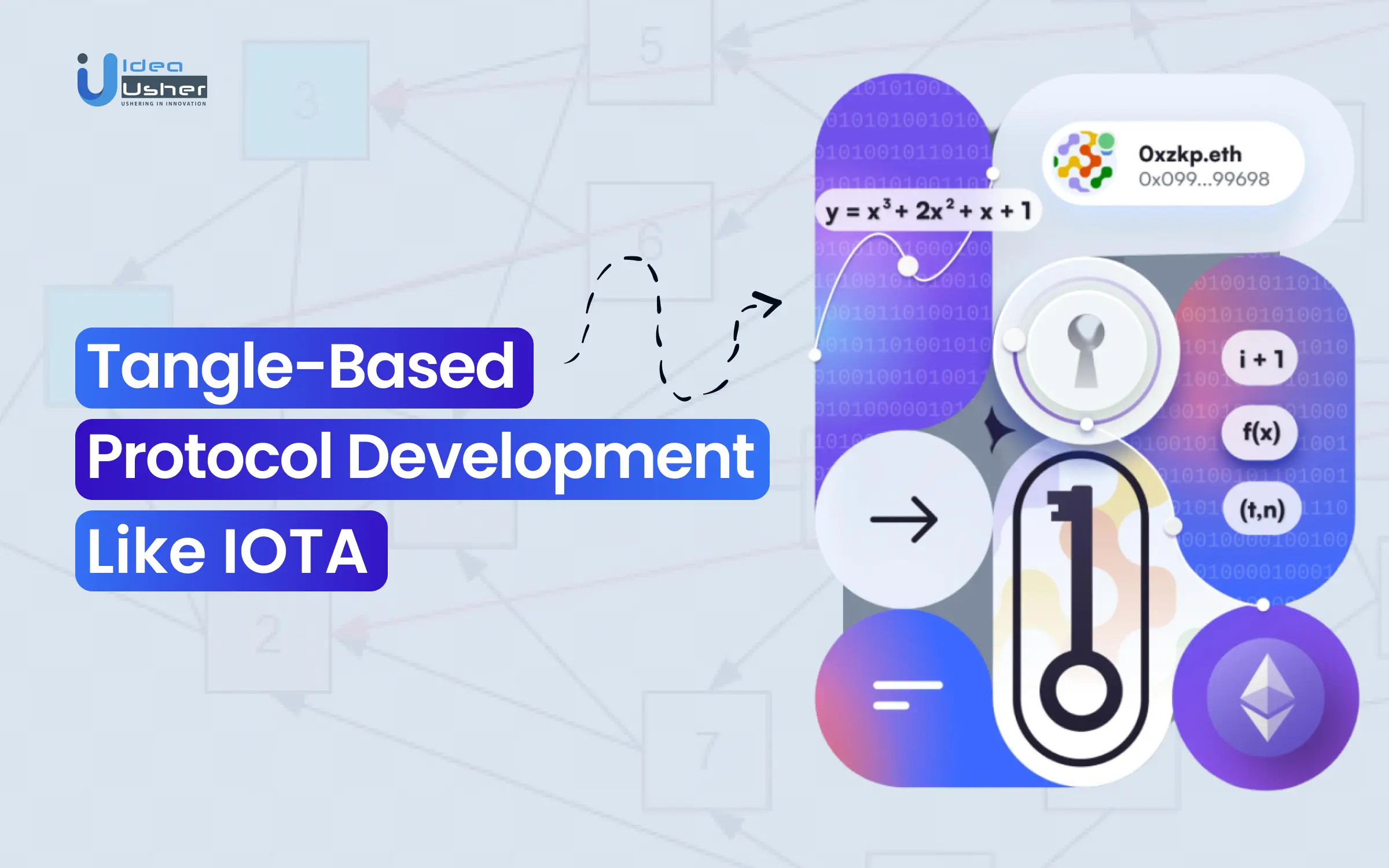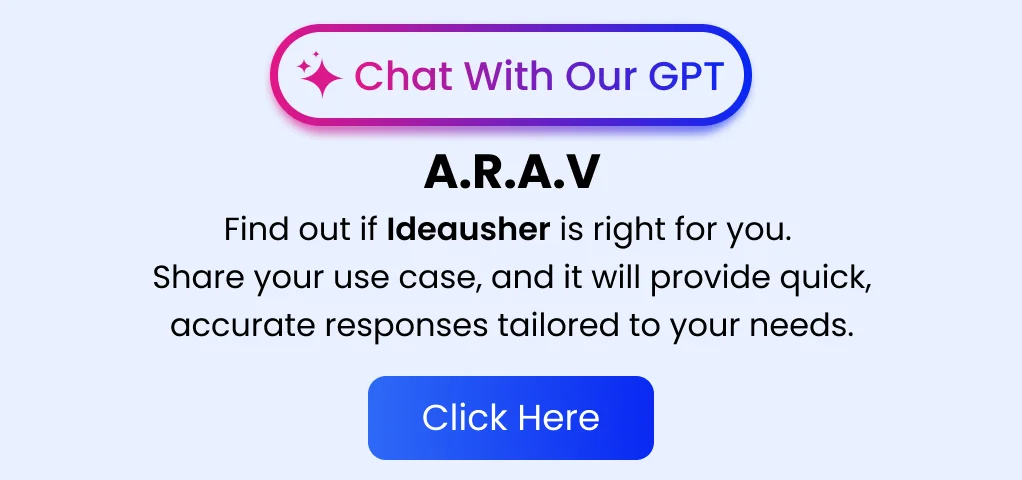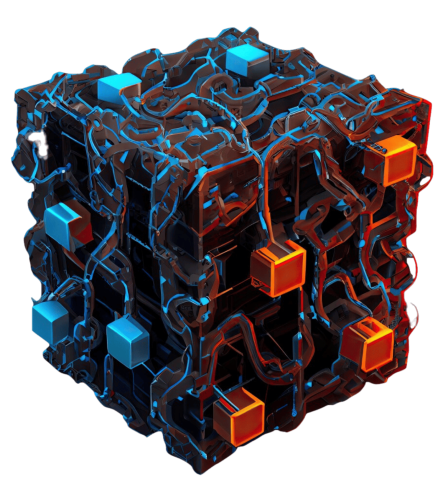The growing demand for scalable, fee-less, and efficient distributed ledger technologies has led to the rise of Tangle-based protocols like IOTA. Traditional blockchain systems, while revolutionary, face challenges related to scalability, high transaction fees, and energy consumption, making them less ideal for high-volume applications like IoT. Tangle-based protocols, such as IOTA, use a Directed Acyclic Graph (DAG) structure that enables parallel transaction processing, allowing for faster, more scalable, and cost-efficient solutions.
This blog will serve as a comprehensive guide for anyone looking to develop a Tangle-based protocol like IOTA for IoT systems. It will cover key technical aspects, development strategies, and the monetization potential of such a cutting-edge solution.
Key Market Takeaways Of Blockchain-Distributed Ledger Platforms
Source: MarketResearchFuture
North America led the blockchain distributed ledger market in 2023, driven by early adoption and investments from major technology companies like IBM, Microsoft, and Amazon. Europe holds the second-largest market share, while the APAC region is expected to grow at the highest rate, fueled by blockchain adoption in China and India. South America and the Middle East & Africa are anticipated to experience moderate growth.
The Blockchain Distributed Ledger Market is segmented into cryptocurrency, smart contracts, supply chain management, healthcare, and banking and finance applications. Cryptocurrency leads the market, driven by its growing adoption for payments and investments, and is expected to dominate through 2032. Smart contracts and healthcare applications are projected to witness significant growth due to their increasing use in industries like finance, supply chains, and patient data management. Meanwhile, supply chain management and banking continue to grow steadily as blockchain enhances efficiency, transparency, and regulatory compliance.
Work with Ex-MAANG developers to build next-gen apps schedule your consultation now
Overview of Tangle-Based Protocols
Tangle-based protocols represent an innovative approach to distributed ledger technology that diverges from the traditional blockchain structure. A Tangle is a type of DLT that uses a Directed Acyclic Graph data structure instead of a linear chain of blocks. Transactions are not grouped into blocks; instead, they are processed in parallel and connected to multiple previous transactions. The most prominent example of this technology is IOTA, which employs a unique architecture to address challenges related to efficiency and transaction costs in blockchain systems.
How IOTA Works
IOTA’s approach is suited to environments where traditional blockchains face limitations, such as micropayments, IoT applications, and M2M interactions. Here’s how it works:
1. Transaction Issuance
When a user wants to send a transaction, they create a new entry and attach it to the Tangle. This attachment references two prior transactions in the network. The Tangle ensures that each transaction is connected to others, forming a web-like structure that grows dynamically.
2. Transaction Validation
To attach their transaction to the Tangle, the user must validate two previous transactions. This validation requires performing computational work. The computational task ensures the network remains secure and resistant to spam attacks. By validating previous transactions, the user contributes to the network’s integrity and helps confirm the validity of older transactions.
3. Tangle Growth
As new transactions are added and validated, the Tangle evolves into a branching structure. Unlike blockchains, which grow linearly, the Tangle expands in multiple directions simultaneously, allowing for parallel processing of transactions.
4. Consensus Mechanism
Consensus in IOTA is achieved through continuous validation by network participants. There are no miners or centralized entities responsible for approving transactions. Instead, every user issuing a transaction contributes to the consensus process. The Tangle’s decentralized and self-regulating nature ensures that the ledger’s state reflects the majority consensus of the network participants.
Must-Have Features in a Tangle-Based Platform Like IOTA
Developing a Tangle-based platform similar to IOTA requires integrating key features that leverage the advantages of the DAG architecture while addressing real-world challenges. Below are the must-have features:
1. Fee-Less Transactions
A hallmark of Tangle-based platforms is their ability to support transactions without fees. This feature is crucial for enabling cost-effective micropayments and machine-to-machine (M2M) transactions, where traditional transaction fees can be prohibitively expensive. By eliminating the need for miners and instead relying on users to validate transactions, the system achieves a decentralized and sustainable approach to processing payments. This not only reduces costs but also encourages broader adoption across various industries.
2. Decentralized Validation
A decentralized validation process is essential for ensuring security and maintaining trust in a Tangle-based platform. By designing a system where every new transaction validates two previous ones, the platform avoids central points of failure and enhances its resilience against attacks. This approach not only secures the network but also fosters a transparent and tamper-proof environment for all transactions.
3. Lightweight Infrastructure
A Tangle-based platform must be lightweight to accommodate the limitations of IoT devices. Many IoT devices operate with constrained computational power and storage capabilities, making resource efficiency a critical consideration. By minimizing the computational requirements for transaction validation and reducing storage needs, the platform ensures seamless integration with diverse IoT devices, fostering widespread usability.
4. Real-Time Processing
Near-instant transaction confirmation is a critical feature for Tangle-based platforms, particularly for applications requiring real-time data processing, such as autonomous vehicles and smart grids. By optimizing the consensus and validation processes within the Tangle, the platform can achieve rapid transaction speeds, enhancing its utility for time-sensitive operations.
5. Interoperability
Interoperability is vital for the adoption and versatility of a Tangle-based platform. Seamless integration with other systems and devices enables the platform to support diverse use cases across industries. By providing APIs, SDKs, and standardized protocols, the platform ensures compatibility with third-party applications, encouraging innovation and collaboration.
6. Machine Economy Readiness
Tangle-based platforms are designed to facilitate machine-to-machine (M2M) transactions, a key application within the IoT economy. This feature empowers autonomous devices to transact securely and efficiently without human intervention. By enabling automated communication between devices, the platform supports the development of smart, interconnected ecosystems.
7. Immutability and Auditability
Transaction immutability and traceability are crucial for fostering trust and accountability in applications like supply chain management. By using cryptographic techniques to secure the ledger, a Tangle-based platform ensures that all transactions remain unalterable and easily auditable. This transparency enhances the platform’s reliability and utility in critical sectors.
Why Is Developing a Tangle-Based Protocol Like IOTA a Strong Investment?
Developing a Tangle-based protocol like IOTA is a strategic move with significant growth potential. With scalability, fee-less transactions, and a decentralized, energy-efficient architecture, IOTA is uniquely positioned to power the future of IoT, machine-to-machine payments, and data marketplaces. As adoption grows across industries and the demand for real-time, cost-effective solutions increases, the value of Tangle-based protocols will only continue to rise, making this a highly promising investment for the future of technology and digital economies.
IOTA’s decentralized and energy-efficient validation mechanism ensures transaction security while minimizing environmental impact. The protocol is designed to handle millions of transactions per second, making it well-suited for the rapidly growing IoT market, which is projected to reach $1.1 trillion by 2026.
As of 2024, IOTA’s token, MIOTA, has seen steady adoption across industries, including automotive giants like Volkswagen and Bosch. These partnerships illustrate IOTA’s potential to be integrated into large-scale enterprise solutions.
The revenue opportunities tied to IOTA’s adoption are vast, particularly through enterprise partnerships, data marketplaces, and the growing demand for M2M payment solutions. The infrastructure enables decentralized data exchanges, and its continued industry adoption positions it as a leader in the smart city, automotive, and supply chain sectors. With Tangle-Based Protocol’s market cap consistently in the billions and its foundational role in the future of digital economies, investing in its development offers long-term potential for significant returns as its usage expands.
Monetization Strategy of IOTA
IOTA’s revenue strategy is based on indirect revenue streams and value-added mechanisms, which ensure sustainability and growth. Below is an in-depth look at its approach.
1. Enterprise Partnerships and Licensing
Collaboration with enterprises to integrate Tangle technology into their operations is one of IOTA’s core revenue models. These partnerships often involve licensing proprietary tools or tailored versions of the protocol. Additionally, IOTA provides consulting and integration services, generating revenue by enabling businesses to adopt and implement its cutting-edge solutions. For example, industries such as automotive, manufacturing, and smart cities use IOTA to enhance operational efficiency and connectivity.
2. Data Marketplaces
IOTA enables the creation of decentralized data marketplaces where organizations can securely buy and sell sensor data. These marketplaces facilitate seamless data transactions using IOTA tokens. By promoting the use of its technology in building and maintaining such platforms, IOTA creates value and encourages token adoption. A practical example includes smart city data hubs where devices exchange valuable data like traffic patterns, weather updates, or environmental metrics.
3. Token Value Appreciation
The IOTA Foundation holds a reserve of IOTA tokens, which are appreciated as network adoption grows. Increased demand for these tokens, driven by widespread usage in IoT systems and applications, raises their market value. The Foundation can generate revenue by strategically selling portions of its reserve at higher values as the ecosystem matures. This approach ties the organization’s success to the broader adoption and scalability of its protocol.
4. Infrastructure as a Service
To assist businesses that lack the resources to manage their infrastructure, IOTA offers hosted solutions, APIs, and SDKs. These managed services provide easy network integration and premium features for enterprises. Revenue is generated through subscription fees or pay-as-you-go models. For example, IOTA may provide managed Tangle node services for organizations looking for simplified implementation without the need for extensive technical expertise.
5. Developer Tools and Marketplace
Developers can create and sell their solutions, with IOTA earning a share of the revenue from these transactions. APIs for secure IoT device onboarding or specialized data-sharing modules are examples of tools that developers can monetize, further enriching the ecosystem while generating revenue for IOTA.
Steps to Develop a Tangle-Based Protocol Like IOTA
Building a Tangle-based protocol is a sophisticated process that demands strategic planning and execution. Here’s a detailed look at the essential steps:
1. Define the Use Case and Vision
The first step involves identifying the primary purpose of your Tangle-based protocol and its target audience. This includes pinpointing specific industries such as IoT, finance, or supply chain and determining the core functionalities like fee-less transactions or scalability. A clear roadmap outlining the protocol’s development and adoption strategy is crucial. For instance, you might focus on enabling seamless machine-to-machine (M2M) payments within IoT ecosystems.
2. Design the Tangle Architecture
The foundation of your protocol lies in designing a robust Directed Acyclic Graph (DAG) structure. This involves specifying how transaction validation will work, such as referencing two prior transactions for each new one. It’s also essential to optimize the Tangle for parallel transaction processing, scalability, and low resource consumption. Lightweight cryptographic algorithms can be employed to ensure compatibility with IoT devices.
3. Develop the Consensus Mechanism
A decentralized and secure consensus mechanism is critical for the success of a Tangle-based protocol. This involves creating a system where users validate two previous transactions before issuing new ones, thus eliminating the need for miners. Security measures like lightweight proof-of-work systems can prevent spam and ensure the immutability of transactions. Additionally, mechanisms like tip selection can help validate unconfirmed transactions efficiently.
4. Implement a Transaction Model
Another key step is developing a robust transaction structure. This includes defining essential fields such as sender, recipient, value, and metadata while ensuring that cryptographic signatures secure the transfer. The transaction format should be optimized to minimize size, making it suitable for devices with limited computational power and storage. A simple, efficient transaction model reduces network overhead and enhances performance.
5. Develop Security Protocols
Security is the backbone of any decentralized protocol. Measures to prevent spam and Sybil attacks are necessary to protect the network. Employ advanced cryptographic techniques to secure transactions and maintain data integrity. Conduct regular security audits to identify and address vulnerabilities. Quantum-resistant signature schemes, such as Winternitz One-Time Signature (WOTS), can add an extra layer of resilience.
6. Build Node Software and Network Infrastructure
The protocol’s network relies on efficient node software and infrastructure. This includes developing scalable, lightweight software that can run the nodes, establishing protocols for communication and synchronization, and ensuring smooth transaction propagation. You should set up a test network before deployment to debug and optimize performance. Releasing an open-source node implementation can also foster community involvement and innovation.
7. Integrate APIs and SDKs
APIs and SDKs are essential for enabling developers to build applications on your protocol. The APIs should allow seamless interaction with the Tangle, such as creating transactions or querying data. SDKs in popular programming languages like Python or JavaScript can simplify integration and adoption. Comprehensive documentation and real-world examples are vital for encouraging developers to utilize the protocol effectively.
8. Test, Iterate, and Deploy
Thorough testing is the final step to ensure the protocol is ready for production use. Simulated environments can help identify performance bottlenecks, while feedback from developers and early adopters can guide refinements. A phased deployment strategy, starting with a beta version and scaling up based on performance data, ensures a smooth transition to full-scale public use.
Cost Of Developing a Tangle-Based Protocol Like IOTA
| Category | Description | Cost Range |
| Research and Protocol Design | Core protocol development, whitepaper creation, academic partnerships. | $2,000 – $15,000 |
| Backend Development | Tangle implementation, node software, API development, database integration. | $3,000 – $25,000 |
| Frontend Development | Wallet development, explorer creation, developer tools. | $1,000 – $10,000 |
| App Features | Identity management, data streaming, smart contracts, IoT integration. | $2,000 – $20,000 |
| Testing and QA | Unit testing, integration testing, security audits, penetration testing. | $1,000 – $10,000 |
| UI/UX Design | User research, wireframing, visual design, and usability testing. | $1,000 – $10,000 |
Total Estimated Cost: $10,000 to $100,000
Factors Affecting The Cost Of Developing A Tangle-Based Protocol Like IOTA
- Protocol Complexity: The complexity of designing a tangle-based protocol impacts costs significantly. Features like parallel transaction validation, scalability, and quantum-resilient cryptography require advanced expertise, increasing development expenses.
- Security Requirements: Implementing robust security measures, such as protection against Sybil and spam attacks, adds to the cost. Advanced cryptographic algorithms, security audits, and penetration testing are essential but resource-intensive.
- Consensus Mechanism: Designing a lightweight, decentralized consensus mechanism tailored to IoT devices requires innovation and rigorous testing, which affects overall costs.
- IoT Integration: Seamless integration with IoT ecosystems requires developing lightweight protocols and optimizing performance for resource-constrained devices, adding to the development budget.
Conclusion
A tangle-based protocol like IOTA offers immense potential to revolutionize industries such as IoT, supply chains, and smart cities. Its unique DAG-based architecture ensures scalability, fee-less transactions, and efficient data management, making it ideal for next-generation applications. However, creating such a protocol requires meticulous planning, robust security measures, and expertise in distributed systems and cryptography. By understanding the cost factors and prioritizing user-centric design, developers can build a sustainable and scalable solution that fosters innovation and drives widespread adoption. With the right approach, a tangle-based protocol can become a cornerstone of the decentralized future.
Looking To Develop A Tangle Based Protocol Like IOTA?
At Idea Usher, we specialize in turning visionary concepts into reality, and we’re here to help you develop a cutting-edge Tangle-based protocol like IOTA. With over 500,000 hours of coding experience in app development and emerging technologies, our team is equipped to design and implement a scalable, fee-less, and decentralized system tailored to your unique needs. Whether it’s creating a secure DAG architecture, developing custom consensus mechanisms, or optimizing for IoT and M2M interactions, we deliver solutions that drive innovation and business success. Partner with us to build the next-generation protocol that transforms industries and redefines digital ecosystems with confidence and expertise.
Work with Ex-MAANG developers to build next-gen apps schedule your consultation now
FAQs
1. What is a Tangle-based protocol, and how does it differ from blockchain?
A Tangle-based protocol is a distributed ledger technology using a Directed Acyclic Graph (DAG) instead of a linear blockchain. Unlike blockchain, it allows transactions to be processed in parallel, eliminating miners and transaction fees, making it ideal for IoT and M2M applications.
2. Why is developing a Tangle-based protocol challenging?
Developing a Tangle-based protocol requires expertise in cryptography, DAG structures, and network security. Challenges include designing a robust consensus mechanism, ensuring scalability, and preventing vulnerabilities like spam or Sybil attacks.
3. What industries benefit most from Tangle-based protocols?
Tangle-based protocols significantly benefit industries such as IoT, smart cities, supply chains, healthcare, and energy due to their scalability, low resource requirements, and support for secure data exchange.
4. What are the key components of a Tangle-based protocol?
Key components include a DAG-based ledger, a consensus mechanism (e.g., validating previous transactions), node software for network operations, APIs for developer interaction, and security protocols to prevent fraud.





















